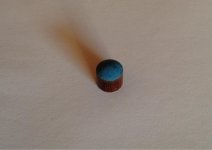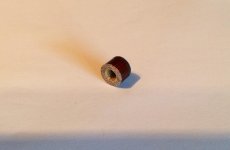Bought a used breaker before o couple of weeks and was wondering why it felt so dead. While breaking it had a bad energy transfer although it was stiff enough. So I decided to cut the ferrule half of the length, and what I saw was not a surprise. The ferrule was capped and the bore inside for the tennon was much deeper than the tennon. The gap also wasn't filled with anything, so there was round about 2/10 of an inch air between tennon and cap of the ferrule.
The shaft was long enough so I flattend the ferrule until tennon and ferrule were plane. Put a samsara break tip on. Now it feels very nive and firm, breaking now is effective and controllable like it is necessary.
Here some pictures of the ferrule end that I cut off.



The shaft was long enough so I flattend the ferrule until tennon and ferrule were plane. Put a samsara break tip on. Now it feels very nive and firm, breaking now is effective and controllable like it is necessary.
Here some pictures of the ferrule end that I cut off.


